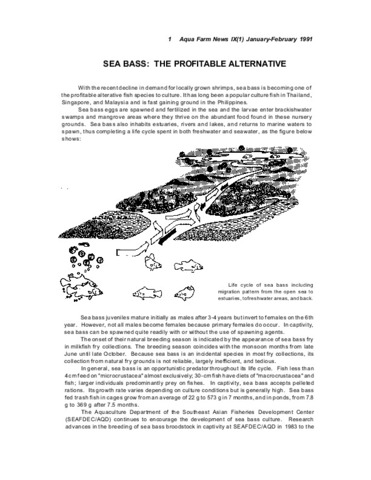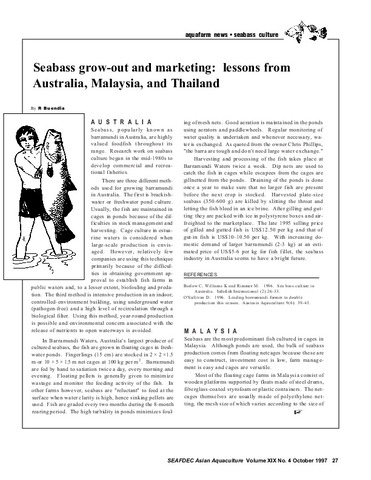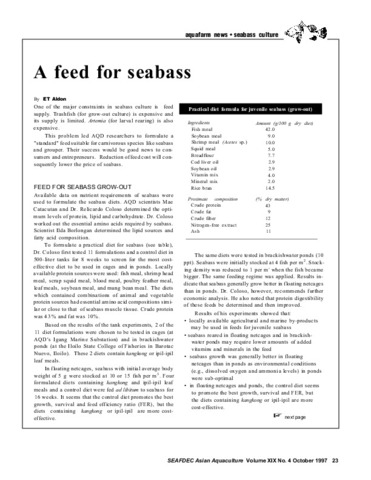The ultrastructure of the hepatocytes of the giant seaperch, Lates calcarifer (Bloch) (Pisces: Centropomidae), during starvation and refeeding with different diets.
- Global styles
- MLA
- Vancouver
- Elsevier - Harvard
- APA
- Help
View/
Date
1986Author
Page views
2,040ASFA keyword
AGROVOC keyword
Taxonomic term
Metadata
Perlihat publikasi penuh
Share
Abstract
Three groups of immature seaperch acclimated in the laboratory on a mixed commercial pellet and minced trashfish diet were starved for 30 days. Thereafter, the first group was starved for 7 more days, the second was refed with commercial pellets, and the third with trashfish. Through transmission electron microscopy, it was found that after the acclimation period the hepatocytes of Lates calcarifer were primarily lipid-storing. Upon starvation, the following modifications in the hepatocytes were evident: decrease of lipid reserves, hepatocyte shrinkage, mitochondrial swelling, dilation of the cisternae of the rough endoplasmic reticulum (RER), and the presence of lysosomes. Among the refed fish, only the hepatocytes of those which were given trashfish recovered from the injury. Recovery was indicated by the restitution of the morphology of the mitochondria, development of parallel stacks of RER, increase in lipid and glycogen, and the distinct compartition of the hepatocytes.
Suggested Citation
Avila, E. M. (1986). The ultrastructure of the hepatocytes of the giant seaperch, Lates calcarifer (Bloch) (Pisces: Centropomidae), during starvation and refeeding with different diets. Asian Marine Biology , 3, 129-137. http://hdl.handle.net/10862/1174
Type
ArticleISSN
1011-4041Koleksi
- Journal Articles [1256]
Related items
Showing items related by title, author, creator and subject.
-
Sea bass: The profitable alternative
Southeast Asian Fisheries Development Center, Aquaculture Department (Aquaculture Department, Southeast Asian Fisheries Development Center, 1991) -
Seabass grow-out and marketing: lessons from Australia, Malaysia, and Thailand
Buendia, Romeo (Aquaculture Department, Southeast Asian Fisheries Development Center, 1997) -
A feed for seabass
Aldon, E. T. (Aquaculture Department, Southeast Asian Fisheries Development Center, 1997)One of the major constraints in seabass (Lates calcarifer) culture is feed supply. Details are given of work conducted at AQD regarding the formulation of a 'standard' feed suitable for carnivorous species like the seabass ...





